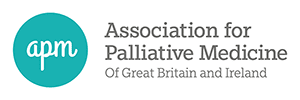Did you know that the APMJ is always on a lookout for new submissions to our monthly newsletter? We welcome anyone to write an article about their experience in relation to palliative care. This may be about a taster day/ attachment/ rotation, a reflection about an event/ person, a work/ audit/ research/ QIP that you have done. You will receive a letter of acknowledgement for your portfolio in return. Feel free to get in touch via submissions.apmj@gmail.com if you wish to contribute to our newsletter or simply to run an idea by us.

APM Juniors Newsletter 2024
APMJ Past Monthly Blogs
Junior Monthly Blog 2023
Junior Monthly Blog 2021
Junior Monthly Blog 2020
Junior Monthly Blog 2021
Junior Monthly Blog 2020
Junior Monthly Blog 2019
- December 2019 Rosie Holdsworth
- November 2019 Simon Tavabie
- October 2019 Gordon Caldwell
- September 2019 Kate Howarth Richard Thomson and Paul Paes
- August 2019 Matt
- July 2019 Ruth Porther
- June 2019 Alicia Griffin
- April 2019 Alexandra Adams
- March 2019 Stephanie Hindle
- February 2019 Hannah Billett
- January 2019 Simran Kaur Deol and Annabel Ariyathurai
Junior Monthly Blog 2017

